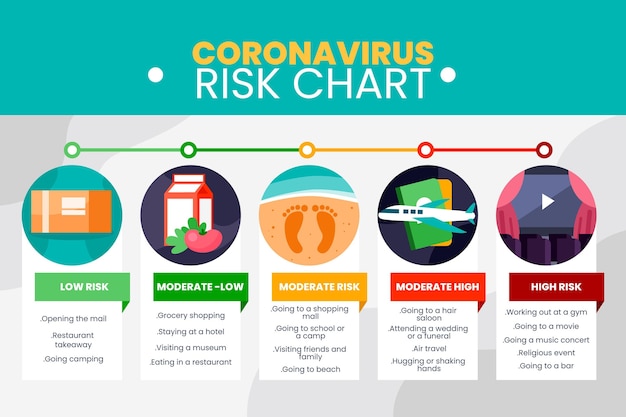Is Your Emergency Fund Enough? Calculate Your 3-Month Safety Net

A sufficient emergency fund typically covers 3-6 months of essential living expenses, acting as a financial safety net to protect against unexpected job loss, medical bills, or other crises, ensuring stability and peace of mind.
Are you prepared for life’s financial curveballs? A robust emergency fund is your first line of defense, and understanding if **Is Your Emergency Fund Sufficient? Calculate Your 3-Month Safety Net Now** is crucial for your peace of mind.
Understanding the Purpose of an Emergency Fund
An emergency fund is like a financial first-aid kit. Before diving into complex investments or financial planning, it is essential to understand the fundamental purpose of an emergency fund.
It’s there to cushion the blow when life throws unexpected expenses your way, providing a financial safety net.
What Constitutes an Emergency?
An emergency isn’t just any unexpected expense. It’s a significant, unplanned cost that could derail your budget. Defining what qualifies as an emergency helps maintain the fund’s integrity.
- Job Loss: Having funds to cover living expenses during unemployment.
- Medical Bills: Unexpected medical expenses not covered by insurance.
- Car Repairs: Necessary repairs to keep your vehicle operational.
- Home Repairs: Urgent repairs to maintain safety and prevent further damage.

Why Is an Emergency Fund Important?
An emergency fund provides financial security and peace of mind. Knowing you have a financial buffer against unforeseen events provides confidence and stability.
Without it, you might be forced to rely on high-interest credit cards, loans, or even deplete your long-term savings. This can push you into cycles of debt.
In summary, an emergency fund is a crucial component of financial stability, guarding against unexpected expenses and ensuring peace of mind. Without this buffer, individuals may resort to debt or sacrifice long-term savings to cover urgent costs.
Calculating Your Essential Monthly Expenses
Knowing your essential monthly expenses is the first step to calculating the size of your emergency fund. This calculation forms the cornerstone of financial preparedness.
Calculate your essential monthly expenses accurately to determine how much money you need to have on hand, and create a realistic safety net.
Identifying Essential Expenses
Prioritize your spending to identify what is truly essential. Differentiate between necessary expenses and discretionary spending.
- Housing: Rent or mortgage payments, property taxes, and homeowner’s insurance.
- Utilities: Electricity, water, gas, and internet.
- Food: Groceries and essential household supplies.
- Transportation: Car payments, insurance, gas, and public transportation costs.
Expenses are deemed essential if their absence would significantly impact one’s well-being or daily functioning. Consider healthcare costs, minimum debt payments, and childcare expenses as crucial components of necessary monthly spending.
Tracking Your Spending
Tracking your spending habits provides valuable insights into where your money goes each month. Utilize budgeting apps, spreadsheets, or good old-fashioned notebooks to monitor your expenses over a period of time.
Categorize your expenses to help identify areas where you can potentially reduce spending. By knowing where your money goes each month, you can easily reduce excess spending.
This section focuses on the importance of understanding and tracking essential monthly expenses as the foundation for calculating an adequate emergency fund. Accurate tracking helps individuals pinpoint their core needs, ensuring they set realistic and achievable financial goals for future stability.
Determining Your 3-Month Coverage Goal
A 3-month emergency fund is a common recommendation, but it’s essential to personalize this goal based on your specific circumstances. Assess your job security, potential risks, and financial obligations.
Evaluate your job’s stability and calculate the ideal length of time your emergency fund should cover to ensure a secure financial future.
Assessing Job Security
Evaluate the stability of your job and industry. Consider factors like company performance, industry trends, and your own skills and experience.
If you work in a volatile industry or have a high-risk job, you might want to consider a larger emergency fund.
- Industry Stability: Is your industry growing or shrinking?
- Company Performance: Is your company profitable and stable?
- Your Skills: Are your skills in high demand?
- Employment History: How stable has your employment been in the past?
Adjusting for Personal Circumstances
Factor in any unique financial obligations or potential risks you might face. If you have dependents, significant debt, or health issues, you might need a larger safety net.

This section highlights the importance of tailoring your emergency fund goal to individual job security and personal circumstances. By assessing job and industry stability, understanding personal financial obligations, and acknowledging potential risks, individuals can adapt their safety net, improving financial readiness during unforeseen life events.
Step-by-Step Guide to Calculating Your 3-Month Safety Net
Calculating your 3-month safety net involves simple math. Use your list of essential monthly expenses to calculate your safety net.
Follow the easy steps to correctly calculate how much money belongs in your emergency fund.
Totaling Essential Monthly Expenses
Add up all your essential monthly expenses to arrive at a total. This includes everything from rent and utilities to groceries and transportation.
Review past bank statements and credit card bills to ensure you haven’t missed anything.
Multiplying by Three
Multiply your total essential monthly expenses by three to determine your 3-month coverage goal. This figure represents the amount of money you’ll need to cover your expenses for three months.
For example, if your essential monthly expenses total $2,500, your 3-month emergency fund goal would be $7,500.
Here’s the math for the example: $2,500 x 3 = $7,500, meaning you will need $7,500 in your emergency fund to cover three months.
Refining Your Calculation
Consider adding a buffer to your calculation to account for unexpected or underestimated expenses. A buffer of 10-20% can provide extra peace of mind.
Revisit your emergency fund goal periodically to ensure it still aligns with your current expenses and circumstances.
This section breaks down the calculation of a 3-month emergency fund into manageable steps. By summing essential monthly expenses, multiplying the total by three for a 3-month safety net, and including a buffer for unforeseen costs, people can easily determine how much to set aside.
Strategies for Building Your Emergency Fund
Building an emergency fund doesn’t happen overnight. Adopt practical strategies for saving.
Starting with small changes can gradually lead to a robust financial safety net.
Setting a Savings Goal
Define a specific savings goal based on your calculation. Having a target in mind makes it easier to stay motivated and track your progress.
- Break it Down: Divide your total savings goal into smaller, more manageable monthly targets.
- Automate Savings: Set up automatic transfers from your checking account to your savings account.
- Track Progress: Monitor your progress regularly and celebrate milestones along the way.
Cutting Unnecessary Expenses
Identify areas where you can cut back on spending and redirect those funds to your emergency fund. Small changes can make a big difference over time.
Look for subscriptions or services you can cancel, meals you can cook at home instead of eating out, and entertainment options you can substitute with free or low-cost alternatives.
In summary, this section highlights the importance of defining clear savings objectives and systematically reducing discretionary costs to build an emergency fund. Implementing strategies such as setting realistic monthly targets, automating savings procedures, and regularly tracking gains can help build financial security.
Where to Keep Your Emergency Fund
The location of your emergency fund is just as important as the amount you save. You will want your emergency fund to be safe, liquid, and easily accessible.
Choose accounts that align with these criteria to ensure your funds are there when you need them most.
High-Yield Savings Account
Consider placing your emergency fund in a high-yield savings account. These accounts offer higher interest rates than traditional savings accounts, allowing your money to grow over time.
Look for accounts that are FDIC-insured for added security.
Money Market Account
Money market accounts are another option for storing your emergency fund. They typically offer competitive interest rates and check-writing privileges.
However, they may come with balance requirements or fees, so be sure to compare terms and conditions carefully.
This section addresses selecting an optimal location to ensure safety, liquidity, and accessibility of funds. Exploring alternatives such as high-yield savings and money market accounts allows decision-makers to evaluate the trade-offs between rate of return and availability, hence improving financial preparedness.
| Key Point | Brief Description |
|---|---|
| 💰 Emergency Fund Goal | Cover 3-6 months of essential expenses. |
| 🧾 Essential Expenses | Housing, utilities, food, transportation. |
| 🏦 Fund Location | High-yield savings or money market account. |
| 🎯 Saving Strategy | Automate savings; cut unnecessary expenses. |
Frequently Asked Questions
▼
Start with a smaller goal, like $1,000, and gradually increase it over time. Every little bit helps and builds momentum.
▼
Yes, minimum debt payments are essential. Include them in your calculation to cover those obligations during an emergency.
▼
Relying on credit cards is risky due to high interest rates. An emergency fund is preferable to avoid debt accumulation.
▼
Review it at least once a year or whenever you experience significant life changes, like a new job or major expense.
▼
It depends on individual circumstances. Some may need more, especially if they have unstable income or significant financial responsibilities.
Conclusion
Calculating and building an emergency fund is a critical step towards financial security. By accurately assessing your essential expenses, setting realistic goals, and implementing effective saving strategies, you can create a financial safety net that provides peace of mind and protects you from life’s unexpected challenges.






